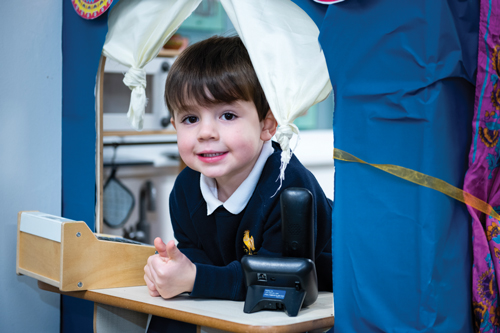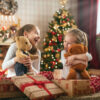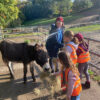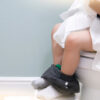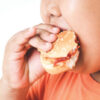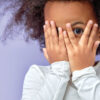
Inclusive Books for Children co-founder, Sarah Satha, shares her thoughts on how to make your child’s bookshelf more inclusive and how to find stories that will captivate your little readers and help families find the fun in reading together.
We all want a just society. We want our children to grow into good people. And we want our children to know their worth. One way in which we can nurture this, whilst also encouraging a love of reading, is by giving our children access to brilliant stories about all different types of people.
On the one hand, this allows young readers to develop empathy for those who may seem different from themselves. On the other, when they see themselves reflected in a character, they will understand that they too are worthy of a story and an adventure. All this can be achieved while developing the habit of reading for pleasure, which research shows is closely tied with educational attainment and personal development.
It can be hard to know where to start when building an inclusive bookshelf. Our childhood favourites and the most eye-catching displays can let us down when it comes to diversity. Or we might worry about giving children a book about a heavy topic we do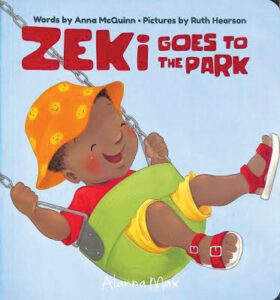 n’t feel they’re ready for yet, such as racism.
n’t feel they’re ready for yet, such as racism.
Our charity Inclusive Books for Children exists to make it easy for parents to find the very best inclusive children’s books through our user-friendly website. Here is our guide to choosing the inclusive gems that will make for an enjoyable, engrossing read, as a family or for early independent reading.
The first thing we might look for when choosing an inclusive bookshelf, is a broad range of types of diversity. Some books manage this in themselves, such as The Nose, Toes and Tummy Book by Sally Nichols and Gosia Herba (Andersen Press) for little ones; People Need People by Benjamin Zephaniah and Nila Aye (Orchard Books) for the three to seven year olds; and The Dog Squad by Clara Vulliamy (HarperCollins), for those aged over seven. These books show a glorious range of ethnicities, disabilities and family structures.
If we’re loo king to create a book collection that truly reflects the rich ethnic diversity of our society, we might look to find authentic representation of as many different ethnicities as we can. Great choices for the littlest readers are the Lenny series, by Ken Wilson Max, the Zeki series by Anna McQuinn and Rosalind Beardshaw (both Alanna Max), and Bhorta Bhorta Baby by Jumana Rahman and Maryam Huq (Bok Bok Books). In picture books for three to seven year olds, we recommend Strong Like Me, by Kelechi Okafor and Michaela Dias-Hayes (Puffin), Esma Farouk, Lost in the Souk by Lisa Boersen, Hasna Elbaamrani and Annelies Vandenbosch (Floris Books), My Bollywood Dream by Avani Dwidevi (Walker Books), and Aisha’s Colours by Nabila Adani (Walker Books). Emerging independent readers will love the Sam Wu series by Katie and Kevin Tsang (Farshore), aged seven and above, the Sona Sharma series by Chitra Soundar (Walker), aged six and above, and the brand new Destiny Ink series by Adeola Sokunbi (Nosy Crow), aged five and above.
king to create a book collection that truly reflects the rich ethnic diversity of our society, we might look to find authentic representation of as many different ethnicities as we can. Great choices for the littlest readers are the Lenny series, by Ken Wilson Max, the Zeki series by Anna McQuinn and Rosalind Beardshaw (both Alanna Max), and Bhorta Bhorta Baby by Jumana Rahman and Maryam Huq (Bok Bok Books). In picture books for three to seven year olds, we recommend Strong Like Me, by Kelechi Okafor and Michaela Dias-Hayes (Puffin), Esma Farouk, Lost in the Souk by Lisa Boersen, Hasna Elbaamrani and Annelies Vandenbosch (Floris Books), My Bollywood Dream by Avani Dwidevi (Walker Books), and Aisha’s Colours by Nabila Adani (Walker Books). Emerging independent readers will love the Sam Wu series by Katie and Kevin Tsang (Farshore), aged seven and above, the Sona Sharma series by Chitra Soundar (Walker), aged six and above, and the brand new Destiny Ink series by Adeola Sokunbi (Nosy Crow), aged five and above.
There are also some fantastic books out there to show children that they don’t have to conform to harmful gender stereotypes, that can weigh as heavily on boys as they do on girls. Faruq and the Wiri Wiri by Sophie Payne and Sandhya Prabhat (Templar) gives us an aspiring chef, while Ballet Kids by Holly Sterling (Walker) tells the story of a young boy preparing for his first ballet performance, and in Look Up! by Nathan Bryon and Dapo Adeloa (Puffin) we meet Rocket, the mega space enthusiast. Meanwhile, for the six to nine year olds, Marv is a superhero with a heart in Alex Falase-Koya’s wonderful series of the same name (OUP), and Too Small Tola gives small-but-mighty in Atinuke’s excellent series (Walker).
At a time when neurodivergence diagnoses are rapidly increasing in the UK, picture books with neurodivergent characters can bring comfort and understanding. Gina Kaminski Rescues the Giant by Craig Barr-Green and Francis Martin (Little Tiger), Bear Shaped by Dawn Coulter-Cruttenden (OUP) and Thunderboots by Naomi Jones and Rebecca Asdown (OUP) are all great examples.
Finally, great disability representation in a book can go a long way to dispelling stereotypes that can cause as much difficulty in the life of a disabled person as their disability itself. In picture books, we suggest What Happened to You? by James Catchpole and Karen George (Faber & Faber), and Terrible Horses by Raymond Antrobus and Ken Wilson-Max (Walker). In chapter books, try Ellie and the Marriage List by Tricia Seabolt (Lantana) and My Other Life by Polly Ho-Yen (Knights Of).
There are loads of great resources out there, so you never have to go it alone. Awards longlists and shortlists are a great source of inspiration. Our own IBC Awards shine a light on books for children up to the age of nine, but for older age children an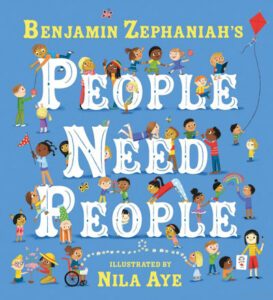 d young adults, the Diverse Book Awards and the Jhalak Prize are a treasure trove of ideas. A number of independent bookshops, both brick and mortar and online, focus on diversity, such as Afrori Books, Mirror Me Write, and A New Chapter Books. Happy Reading!
d young adults, the Diverse Book Awards and the Jhalak Prize are a treasure trove of ideas. A number of independent bookshops, both brick and mortar and online, focus on diversity, such as Afrori Books, Mirror Me Write, and A New Chapter Books. Happy Reading!
Inclusive Books for Children is a charity with a free website for families, schools and libraries that helps them easily choose books for a more inclusive bookshelf. IBC showcases stories that represent all types of family and don’t draw on gender stereotypes or negative tropes. They feature books with a variety of ethnicities, positive images of disabilities and different identities, and celebrate Own-Voice authors and illustrators.


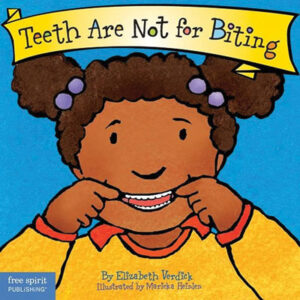 • Reading storybooks, for example the behaviour series by Elizabeth Verdick and other authors, such as ‘Teeth are not for Biting’, is commonly used in Early Years settings to help reinforce positive messages about behaviour. These could also be used by parents at home. This is most beneficial if used proactively, rather than as a reaction to specific events.
• Reading storybooks, for example the behaviour series by Elizabeth Verdick and other authors, such as ‘Teeth are not for Biting’, is commonly used in Early Years settings to help reinforce positive messages about behaviour. These could also be used by parents at home. This is most beneficial if used proactively, rather than as a reaction to specific events.


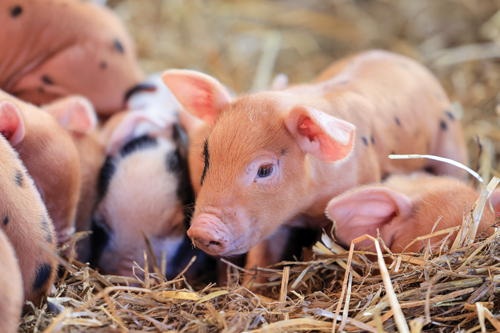

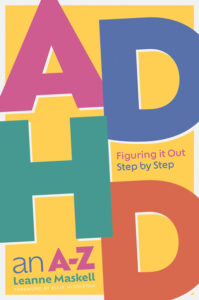 ave time to figure it out together!
ave time to figure it out together!